Trek
Discover the majestic beauty of Trek
Showing 12 Packages
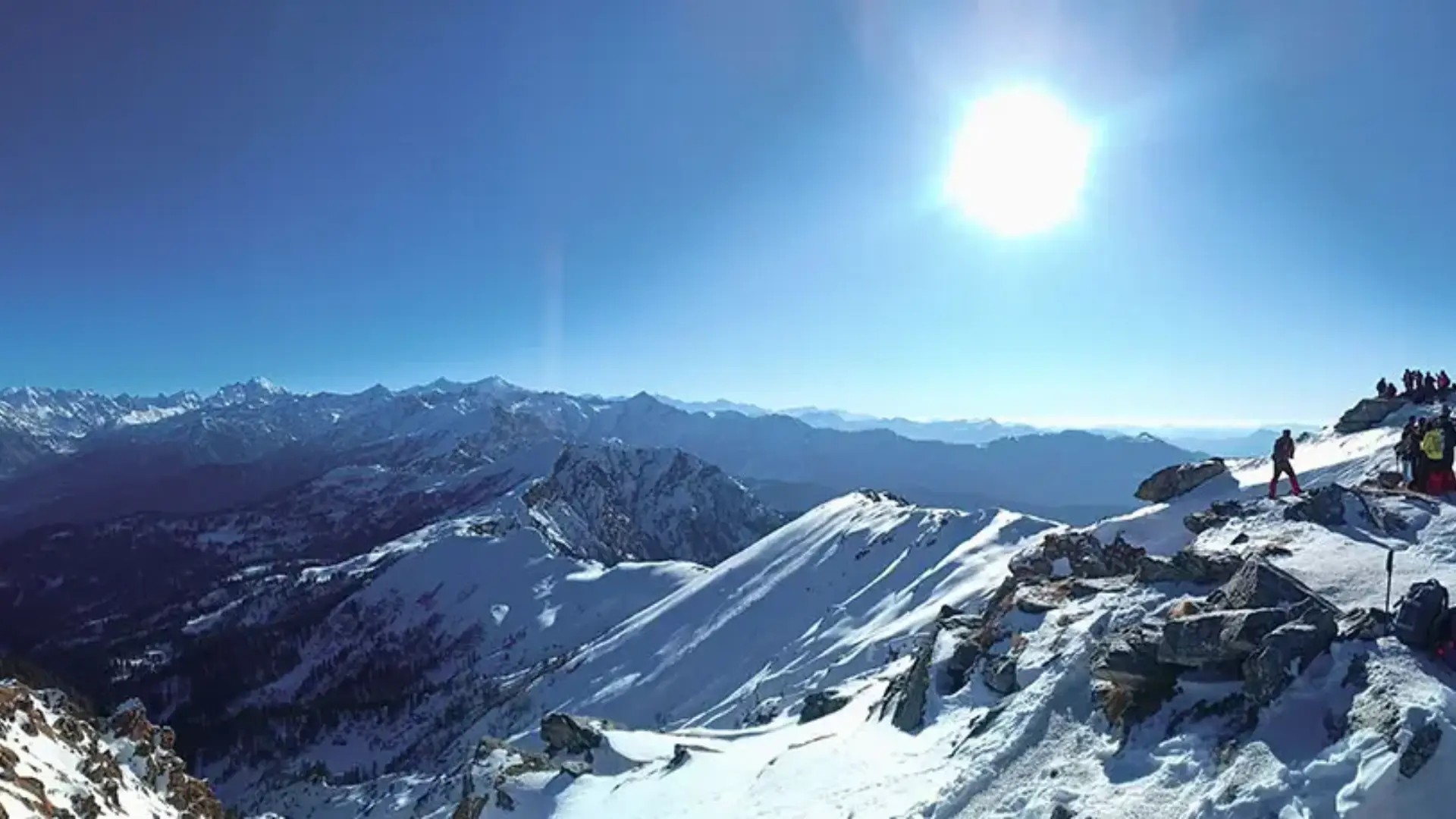
Kedarkantha Trek
The Kedarkantha Trek is one of the most popular and picturesque winter treks in Uttarakhand, India. Nestled in the Govind Wildlife Sanctuary of Uttarkashi district, this 6-day trek offers breathtaking views of snow-covered peaks, dense pine forests, and serene Himalayan villages. Starting from the quaint village of Sankri, the trail ascends through snowy meadows, charming Juda ka Talab, and leads to the majestic Kedarkantha summit at 12,500 feet. Ideal for beginners and experienced trekkers alike, Kedarkantha is known for its easy-to-moderate difficulty level and dramatic 360-degree views of famous peaks like Swargarohini, Bandarpoonch, Black Peak, and more. The campsites on this trek are among the most scenic in the Indian Himalayas, especially during the winter months when the entire trail turns into a snowy wonderland. Whether you're seeking your first Himalayan trek or a magical winter escape, Kedarkantha promises a memorable adventure filled with natural beauty, peace, and a sense of accomplishment.
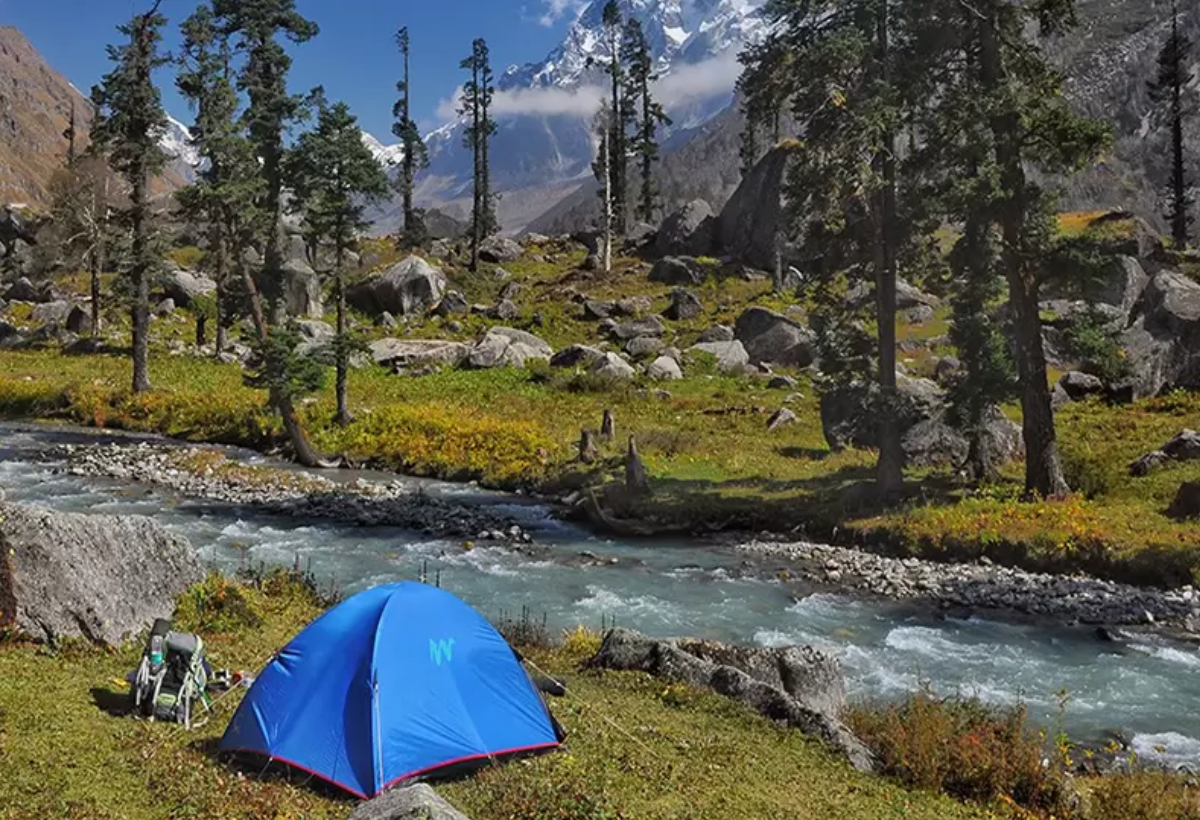
Har ki Dun Trek
Har Ki Dun Trek, also known as the "Valley of Gods," is one of the most scenic and culturally rich treks in Uttarakhand, nestled in the Govind Ballabh Pant National Park. Located at an altitude of around 3,566 meters (11,700 feet), this trek offers breathtaking views of snow-covered peaks like Swargarohini, Bandarpoonch, and Black Peak. The 6–7 day trail passes through charming Himalayan villages such as Osla and Seema, dense pine forests, alpine meadows, and gushing streams. Rich in flora, fauna, and mythology, Har Ki Dun is perfect for nature lovers, photographers, and those seeking an offbeat trekking experience. Ideal for beginners and seasoned trekkers alike, this valley remains accessible in both summer (lush green) and winter (snow-covered), offering a unique experience in every season.
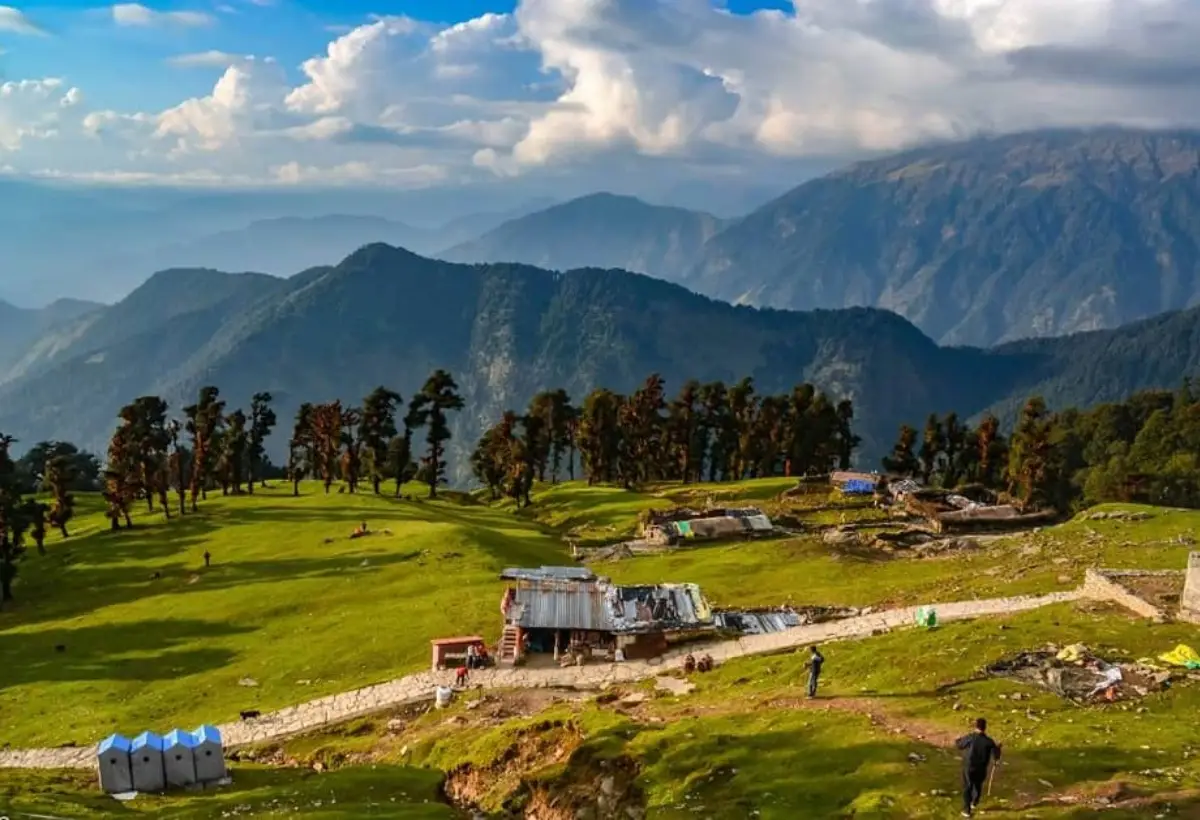
Chopta Tungnath Trek
Chopta Tungnath Trek is one of Uttarakhand’s most scenic and accessible treks, perfect for beginners and spiritual seekers alike. Nestled in the Garhwal Himalayas, this moderate-level trek starts from Chopta, often referred to as the "Mini Switzerland of India," and leads you to Tungnath, the world’s highest Shiva temple, perched at an altitude of 3,680 meters. The trail offers mesmerizing views of towering peaks like Nanda Devi, Trishul, Chaukhamba, and Kedarnath, along with lush alpine forests, rhododendron groves, and tranquil meadows. The trek typically continues further to Chandrashila Peak, offering a 360-degree panoramic view of the Himalayas. Whether you're an adventure enthusiast or a pilgrim, the Chopta Tungnath Trek promises a soul-soothing experience combining natural beauty, spiritual energy, and Himalayan charm.
.webp)
Gaumukh Tapovan Trek
The Gaumukh Tapovan trek is one of the most spiritually enriching and visually stunning treks in the Indian Himalayas. Starting from Gangotri in Uttarakhand, the trail leads you to Gaumukh—the snout of the Gangotri Glacier and the sacred source of the Ganges River. From there, the trek ascends to Tapovan, a high-altitude meadow offering spectacular views of iconic peaks like Mt. Shivling and the Bhagirathi group. Ideal for both adventure seekers and pilgrims, this moderate to challenging trek blends natural beauty, glacier landscapes, and deep spiritual significance.
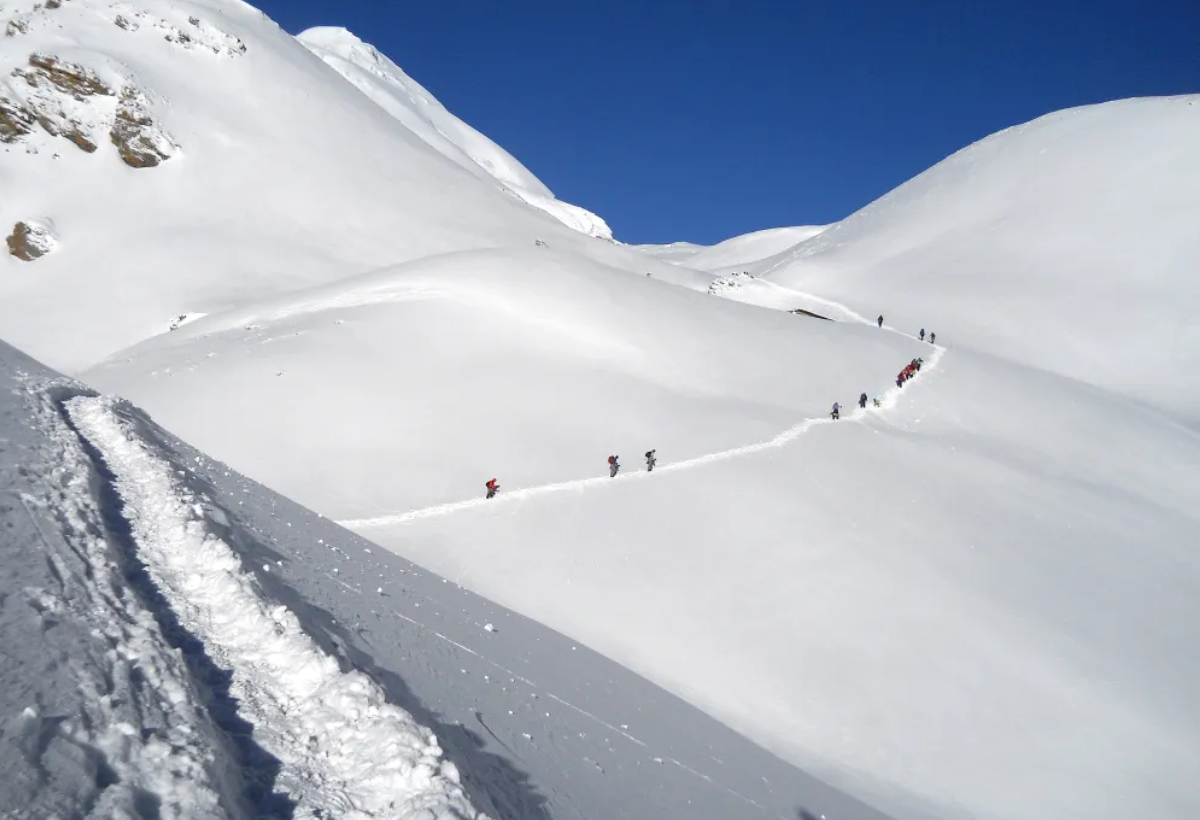
Bali Pass Trek
The Bali Pass Trek is one of the most spectacular and challenging high-altitude treks located in the Garhwal region of Uttarakhand, India. This trek is famous for its pristine alpine meadows, crystal-clear glacial lakes, towering Himalayan peaks, and thrilling mountain passes. Bali Pass sits at an altitude of approximately 5,200 meters (17,060 feet), making it a true high-altitude adventure suited for experienced trekkers. The trek typically starts from the charming village of Osla or Gangani in the Har Ki Dun valley and takes trekkers through remote and untouched landscapes, including the stunning Kedartal Lake, also known as the Shiva Lake. Crossing the Bali Pass provides panoramic views of snow-capped peaks such as Bandarpoonch, Swargarohini, and Kalanag, making it a photographer's paradise. This trek offers a perfect blend of natural beauty, challenging terrains including snowfields, rocky ridges, and glaciers, and rich local culture as you pass through quaint Himalayan villages. The journey usually spans 10 to 12 days, including acclimatization, allowing trekkers to experience the diverse ecosystems of the Western Himalayas. Best attempted between June and October, the Bali Pass Trek requires good physical fitness and prior trekking experience due to its high altitude and technical sections. Permits from the Uttarakhand Forest Department are mandatory, and hiring a knowledgeable guide is highly recommended for safety. The Bali Pass Trek is a gateway to some of the most remote Himalayan landscapes and remains one of the most rewarding treks for adventure enthusiasts seeking solitude, breathtaking vistas, and a deep connection with nature.

Valley of Flower Trek
The Valley of Flowers Trek is one of the most scenic and beginner-friendly high-altitude treks in the Indian Himalayas. Located in the Chamoli district of Uttarakhand, this iconic trail takes you to a lush alpine valley that comes alive with thousands of colorful wildflowers between July and September. It lies within the Nanda Devi Biosphere Reserve and has been recognized as a UNESCO World Heritage Site for its ecological importance and breathtaking natural beauty. The trek begins at the small village of Govindghat, from where a motorable road leads to Pulna, and then the trek continues on foot to Ghangaria, the base for both the Valley of Flowers and Hemkund Sahib treks. From Ghangaria, the trail ascends into a vast, glacial valley carpeted with over 500 species of alpine flowers like blue poppies, Himalayan bellflowers, cobra lilies, and more. You'll also witness waterfalls, glaciers, and distant snow-covered peaks like Nilgiri Parbat and Hathi Parbat. This trek is not just about flora — it's also home to rare wildlife such as musk deer, Himalayan monals, and even snow leopards (though rarely spotted). The valley sits at an altitude of around 3,600–3,800 meters, offering stunning photo opportunities without extreme altitude challenges. The trail to Hemkund Sahib, a high-altitude Sikh pilgrimage site located at 4,329 meters, is often added as an optional but highly recommended day hike. It takes you to a crystal-clear glacial lake surrounded by snow-capped peaks and a serene gurudwara — adding spiritual depth to the adventure. Ideal for families, nature enthusiasts, solo travelers, and beginners, the Valley of Flowers Trek is moderate in difficulty with well-defined trails and basic lodging facilities. The best time to visit is mid-July to mid-September, right after the monsoon when the valley is in full bloom.

Harshil Valley Trek
The Harshil Valley Trek is a serene and relatively unexplored trekking experience nestled in the Garhwal Himalayas of Uttarakhand, close to the Indo-Tibetan border. Unlike crowded trails, this trek offers raw natural beauty, peaceful trails, and authentic village culture, making it perfect for those looking for a tranquil escape into the mountains. Harshil, a small but picturesque valley town located at an altitude of around 2,600 meters, is famous for its apple orchards, dense pine forests, and glacial rivers. The valley lies along the Bhagirathi River, just 25 km before Gangotri, and serves as a gateway to multiple short and long treks in the region. The trek usually begins in or around Harshil village and leads you through traditional Garhwali hamlets, alpine meadows, rhododendron forests, and panoramic viewpoints offering breathtaking views of peaks like Bandarpoonch, Srikanth, and Gangotri group of mountains. Depending on the chosen route, treks from Harshil may cover beautiful campsites like Lama Top, Kyarkoti, or Chitkul (for extended treks). This trek is a low-altitude to moderate-altitude route, making it suitable for beginners, photographers, and families. What sets it apart is its cultural immersion — you’ll often stay in homestays or camp near remote villages, offering a glimpse into the traditional lifestyle of Himalayan communities. The best time to do the Harshil Valley Trek is from May to June and September to early November, when the skies are clear, and the valley is lush and vibrant.
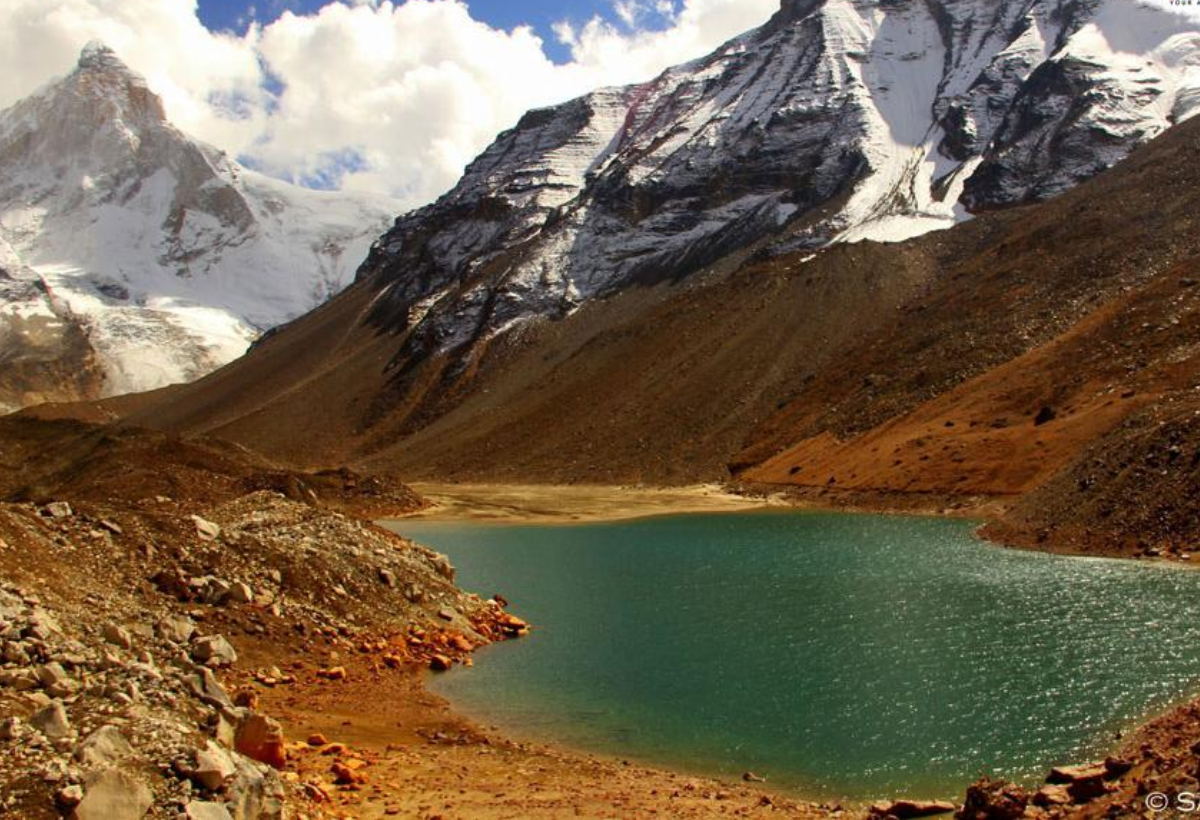
Kedartal Trek
The Kedartal Trek is one of the most breathtaking and challenging high-altitude treks in the Indian Himalayas, located in the Gangotri region of Uttarakhand. It takes trekkers to the stunning Kedartal (also known as Shiva’s Lake), a glacial lake situated at an elevation of approximately 4,750 meters (15,580 ft), right at the base of majestic peaks like Thalay Sagar (6,904 m), Brigupanth (6,772 m), and Jogin group of mountains. Starting from the holy town of Gangotri, the trek quickly enters a rugged and remote alpine terrain filled with rocky moraines, icy streams, and steep climbs. The trail runs alongside the Kedar Ganga, a river considered sacred and believed to be Lord Shiva’s contribution to Bhagirathi. With its spiritual backdrop and raw Himalayan wilderness, the trek combines mythology and adventure in equal measure. This trek is best suited for experienced and physically fit trekkers due to its steep ascents, high altitude, and rapidly changing weather conditions. Despite the challenges, the rewards are unparalleled — mirror-like reflections of towering peaks on the glacial lake, sightings of Himalayan blue sheep (bharal), and some of the most isolated and majestic views in the Garhwal Himalayas.
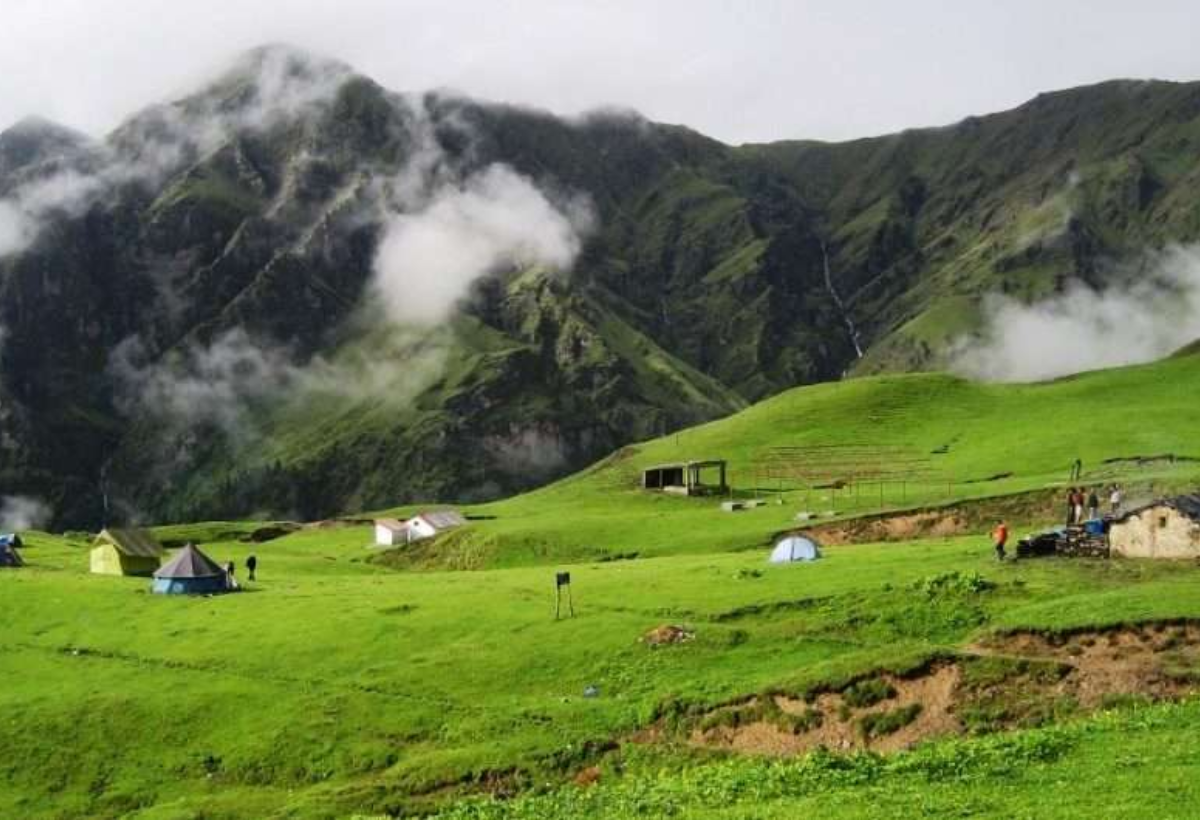
Dayara Bugyal Trek
The Dayara Bugyal Trek is a picturesque high-altitude trek located in the Garhwal region of Uttarakhand. Famous for its expansive alpine meadows (bugyals) that bloom with vibrant wildflowers during spring and summer, Dayara Bugyal offers an ideal combination of natural beauty and moderate trekking challenge. Starting from Sari village or Taluka, the trail ascends gently through dense forests of oak, rhododendron, and deodar, opening up into vast open meadows at an elevation of approximately 3,350 meters (11,000 feet). These meadows stretch over several square kilometers and provide breathtaking views of the surrounding snow-capped Himalayan ranges, including Bandarpunch, Swargarohini, and Black Peak. The trek is suitable for beginners and families, making it popular for those looking for a serene getaway in the mountains. Camp under the stars amid lush green pastures, breathe fresh mountain air, and experience local village culture. The best time to visit is from May to June and September to October, when the weather is pleasant and the meadows are in full bloom. Whether you’re an avid trekker or a nature enthusiast, Dayara Bugyal promises a rejuvenating experience away from crowded trails and noisy towns.
.webp)
Nagtibba Trek
Nagtibba, also known as Nag Tibba or Serpent’s Peak, is a popular trekking destination located about 82 km from Dehradun in Uttarakhand. It is the highest peak in the Lesser Himalayas of Garhwal, standing at an elevation of approximately 3,022 meters (9,915 feet). This trek is considered beginner-friendly and is perfect for those who want a short yet fulfilling Himalayan experience. The trail passes through beautiful forests of oak, rhododendron, and pine, along with charming villages and alpine meadows. The summit offers breathtaking panoramic views of the snow-clad peaks of Bandarpoonch, Swargarohini, and the Gangotri group of peaks. The trek can be completed in 2 days, making it ideal for a weekend getaway. It is also known for its spiritual significance, with the Nag Tibba temple located near the summit. Nagtibba Trek is excellent for nature lovers, photographers, and fitness enthusiasts who want a moderately easy trek close to Dehradun.
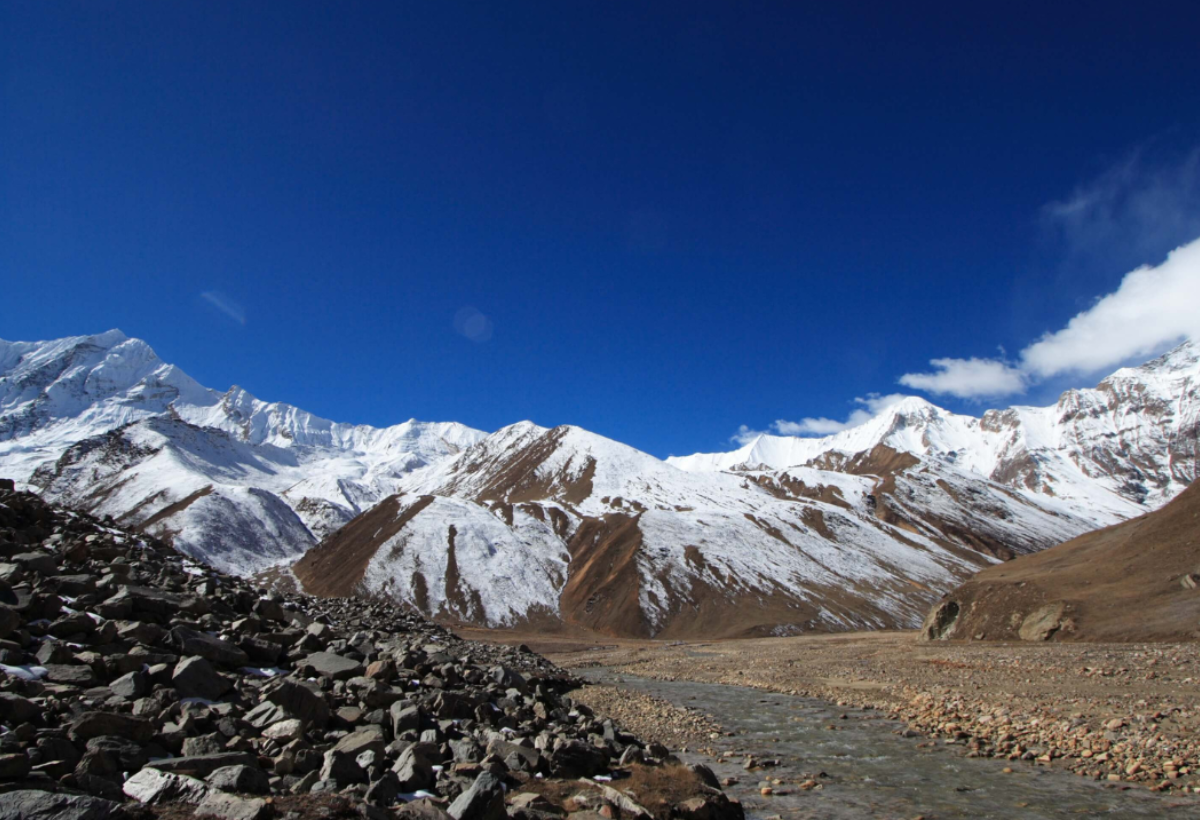
Nanda Devi Base Camp Trek
The Nanda Devi Base Camp Trek is a high-altitude Himalayan journey that takes you deep into the Nanda Devi Biosphere Reserve, offering majestic views of Nanda Devi—the second-highest peak in India. Located in the Kumaon region of Uttarakhand, this trek is ideal for seasoned trekkers looking to explore one of the most serene and less-commercialized trails of the Indian Himalayas. The trek usually begins from Munsiyari, a quaint hill town known for its panoramic vistas of the Panchachuli peaks. From here, the trail winds through dense forests of rhododendron and oak, crosses charming villages like Lilam and Bugdiar, and opens up into the alpine meadows of Martoli and Lwan—once a thriving trade route to Tibet. The final approach to the Nanda Devi Base Camp offers incredible views of peaks like Nanda Kot, Trishul, and of course, the mighty Nanda Devi herself. The trek spans approximately 90–100 km and takes around 10–12 days to complete. With an altitude that reaches close to 4,000 meters, trekkers must be physically fit and prepared for the challenges of high-altitude hiking. Camping is done along the route, and the remote nature of the trail offers a peaceful escape into nature. Expect to see Himalayan wildlife, traditional Kumaoni culture, and breathtaking landscapes that shift from dense forests to snowy peaks. The best time to do the Nanda Devi Base Camp Trek is from May to June and September to October, when the weather is clear and the trails are open.
.webp)
Roopkund Trek
The Roopkund Trek, located in the Chamoli district of Uttarakhand, is one of India’s most legendary high-altitude treks, offering a surreal mix of mystery, adventure, and scenic grandeur. Sitting at an altitude of around 5,029 meters (16,499 feet), Roopkund Lake is famously known as the “Skeleton Lake” due to the human remains that lie scattered around its edges—believed to be from a 9th-century group of pilgrims caught in a deadly hailstorm. The trek starts from the picturesque village of Lohajung, and the trail takes you through dense oak and rhododendron forests, charming Himalayan settlements, and wide alpine meadows like Ali Bugyal and Bedni Bugyal. These bugyals (meadows) are some of the most beautiful high-altitude grasslands in the country, offering panoramic views of peaks like Trishul and Nanda Ghunti. As you ascend, the terrain becomes more rugged and snow-covered, eventually leading you to the mysterious glacial lake of Roopkund, which remains frozen for most of the year. The final stretch involves trekking on snow, with steep inclines and high-altitude exposure—making it both challenging and rewarding. Due to its elevation, proper acclimatization, fitness, and preparation are essential. The best time to do the Roopkund Trek is May–June (for snow) and September–October (post-monsoon with clearer views). The trek is around 55–60 km long and typically takes 8–9 days, depending on the route and acclimatization schedule. Though trekking to Roopkund was restricted after 2018 due to environmental concerns, many modified routes are now available up to Bedni Bugyal or Pathar Nachauni, offering the same scenic beauty minus the summit stretch. Whether you trek for its mystery, meadows, or mountains, Roopkund promises a truly unforgettable Himalayan adventure.